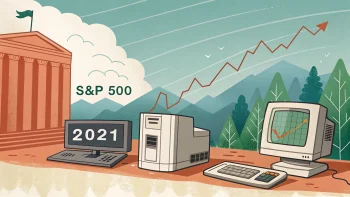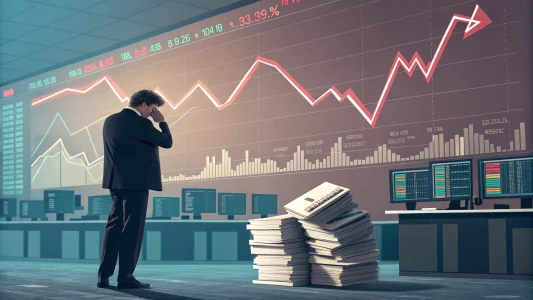Preparing for retirement may take more time, money, and effort than you think. It is especially harder to transition this year as inflationary pressures intensify. Although it may benefit savers and lenders, its impact is less desirable than we think. It erodes the value of dollars and, in turn, hurts the purchasing power of consumers. Not even the financial market can’t dodge or at least cushion the blow.
Older Americans are more vulnerable to risks associated with economic volatility. Over the past decade, they have composed the majority of bankruptcy filings in the US. The figures may increase further as uncertainties persist. Hence, it is no surprise that many would-be retirees have decided to continue working. This year, 25% would postpone their retirement, a massive drop from the previous year.
Fortunately, their awareness of investments has improved in the last two years. The capital market sees more inflows despite the bearish trend. Dividend-paying stocks, ETFs, and mutual funds have become a favorite for many, as they offer a sense of security, especially for newcomers, knowing they will receive constant returns. With that, we will discuss everything about dividends and how they can support your retirement.
Table of Contents
ToggleWhat is a dividend?
Before investing in the equity market, you must first determine your goals. Investments can become an excellent passive income if you know what you want. However, you must remember that not all investments pay dividends.
You can become a short-term trader, which appears risky but can generate instant returns. Buying a stock or an ETF at a low price and selling when it goes up can be promising. Also, dividends may not be your priority, and it’s fine. But, it can also be challenging, especially when the price moves sideways or downwards.
You have to identify the patterns and volumes. Doing so will help you find a good entry point before taking a buy or sell position. Other short-term investments do not require trading skills like technical analysis. These include treasury bonds, money-market accounts, and certificates of deposits.
For many retirees, dividend-paying stocks and ETFs provide income without a job. Often, they are for those who do not have time to monitor the market every second. They are suitable long-term investments since payouts are constant.
In essence, dividends are a portion of company earnings distributed to eligible shareholders. They can be paid out every quarter, half-year, and year. Note that both public and private companies can distribute dividends, but not all companies do since dividends are not part of their legal requirements. The following are the typical types of dividends.
Cash Dividend
Cash dividends are the most common type of dividends. Ordinary dividends have periodic payments, while special dividends are non-recurring payouts. Often, companies distribute them during periods of boom or when they have excess income.
It is also essential to know the type of shares before investing. Preferred dividends are deducted from the net income for preferred shares. Because they have a higher priority, they are paid before common shareholders.
Meanwhile, common shares receive common dividends. They are the last in the hierarchy when it comes to company payments. Shareholders and traders in the equity market are also common shareholders. They learn about dividend payments through company press releases.
Stock Dividend
Cash dividends can have an impact on a company’s liquidity. Sometimes their cash flows are insufficient to cover dividends after capital expenditures (CapEx) and borrowings. Dividends can be paid in the form of stocks rather than cash. They appear similar to an automatic dividend reinvestment plan (DRIP).
Stock dividends, like cash dividends, can be ordinary or special. However, they provide instant gains since you can sell these extra stocks at their trading price.
A stock dividend differs from a stock split because stock dividends increase shareholder value, while stock splits happen when companies increase or decrease the number of stocks. These regulate stock liquidity. However, they have no effect on shareholder value because the income per share remains constant
Scrip Dividend
Scrip dividends are issued in the form of promissory notes. It happens when the company does not have enough cash to pay cash dividends.
Property Dividend
Another non-monetary dividend payment is a property dividend. The recording of the distributed property is based on its market value.
Liquidating Dividend
The company may distribute liquidating dividends to return the capital of shareholders. It often precedes company dissolution or shutdown.
How To Live Off Dividends
Despite improved financial literacy, 30% of Americans retire without savings. This group believes that the meager retirement funds and social security benefits can suffice their needs. Sadly, many retirees are yet to secure a constant fund source for their retirement. That is why soon-to-be retirees must catch up with their retirement savings.
It is advisable to invest if you want to expand your money or have a passive income. The best option for a reliable income source is dividend-paying stocks. However, they must prepare to live off of dividends. Any investment is good, but remember that you have to stay liquid.
Determine your retirement living expenses
One of the biggest mistakes you may commit is downgrading expenses in your retirement years. It is not enough that your funds can suffice your basic needs. Retirement can last longer than you think. And as you grow older, you may incur more expenses, such as long-term care and hospitalization. Statistics show that retirees are more than twice as likely to require hospitalization than younger adults. You may also run into debts, as statistics show that 75% of retirees carry debt through their retirement.
You must determine your retirement expenses, including long-term healthcare. Note that Medicare will not last you a lifetime. Your social security benefits may not be enough for your cost of living. You also have to anticipate taxes on your retirement funds. Once you get the figures, you can estimate the dividend income you need on top of your savings and pension funds.
Abide by the 4 Percent Rule
The four-percent rule is a more practical rule of thumb for estimating your retirement living expenses. Retirees may rely on it to decide on the amount to withdraw from their retirement savings every year. This rule helps avoid overspending by keeping a constant retirement income stream. This rule is based on the historical stock and bond returns from 1926 to 1976. Typically, withdrawals consist of dividends on savings and compounding interests on bonds. That way, you can keep adequate funds in the following years.
But of course, it may vary with different scenarios. You may adjust it to 5% in worst-case scenarios. Others suggest lowering it to 3% since it fits the current trends in interest rates. You must consider life expectancy and emergency expenses for a more precise estimation.
Nevertheless, it is still better to have passive income streams than withdraw investments for your retirement expenses. It makes it possible to live off dividends for a long time. You will have an opportunity to maximize the potential value of your investments. Also, you can maintain your assets by keeping expenses lower than what you generate in dividends.
Invest in Stocks That Focus on Dividends
Investment portfolio diversification is an excellent choice to boost your retirement funds. When investing in stocks, you may choose between actual trading for instant capital gains. For long-term investments, you may opt for stocks that pay dividends. Dividend investing promises returns even without watching the stock price every minute.
For better security, you wish to buy blue-chip stocks. They have already stood the test of time and can operate amidst economic volatility. For higher dividends, you may choose the Dividend Aristocrats instead. Either way, you must check the fundamental health of the company.
Check its cash levels in the Balance Sheet. You may also look into the Free Cash Flow to determine if it can sustain its operations and pay dividends. You can also combine it with Net Debt/EBITDA to know if the company earns enough to cover financial leverage. These accounts and financial ratios are more important measures for capital-intensive companies.
Suppose the company has solid fundamentals, allowing it to cover dividends, you still have to find out how long and how much it can sustain dividends. Using the Dividend Payout Ratio, you can check the allocation of net income to dividends.
You can choose to use Free Cash Flow in place of net income, as some people find it more realistic since it accounts for cash transactions. Deducting the CapEx tells you how much cash is left. Once you are sure the company is capable, you must check how enticing the dividends are.
Dividend Growth
Let’s face it; stock dividends usually increase over time, unlike bond interest. The stock market may be riskier, but growth prospects are promising. Dividend growth should be one of the considerations for an excellent long-term investment. In the last two years, many companies halted dividend growth, while some did not pay dividends at all. That is why it is essential to note those who withstand the blow of pandemic disruptions. Now that the global economy faces inflationary pressures, pessimism is taking over again.
Dividend investors must keep an eye on companies with increasing dividends despite market volatility. Dividend Aristocrats are excellent choices. These are a lot of S&P 500 companies that have increased dividends for 25 consecutive years. But, companies other than the S&P 500 may pay the same or better dividends.
Indeed, there are a lot of companies you can add to your portfolio. You may check the five-year, ten-year, or twenty-five-year average dividend growth. Doing so will help you check how much their dividends have grown.
Dividend Yield
You already have a long list of excellent dividend stocks. So, it’s time to trim down your choices. Before buying stocks, you must determine if the dividend is worth the price. The dividend yield shows how much the company pays relative to the stock price.
There is no definite percentage of excellent dividend yield, but analysts recommend a yield of at least 2%. It is advisable to check if the company is part of the S&P 500, 400, or 600. You can also check whether it is on the NYSE and NASDAQ. Once you derive the dividend yield, you can compare it to the average of these stock indices.
Moreover, the dividend yield helps find a reasonable stock price relative to the dividends. The Dividend Discount Model is one of the many stock valuation techniques. It uses the average dividend growth, dividend yield, estimated annual dividend, and cost of capital equity.
What types of investments pay dividends?
Economic volatility and financial capacity influence the risk tolerance of investors. It is not too late to start investing and growing your retirement account. Yet, you must study and observe before putting your eggs into different baskets. Doing so promises more security and potential returns. These are the best dividend investment choices.
Stocks
The stock market is the most popular and preferred choice of dividend investors. Typically, these are publicly-traded companies with a history of dividend payments and growth. Investing has also become more convenient with the advent of electronic trading.
Many S&P 500 companies are considered Dividend Aristocrats. This distinction refers to companies raising dividends for at least 25 years.
Companies other than the S&P 500 have maintained dividend growth for more than 25 years. They are referred to as the Dividend Champions. As of 3Q 2022, there are 147 dividend champions on the NYSE and NASDAQ. Meanwhile, companies that raised dividends for 10-24 consecutive years are called Dividend Contenders. The Dividend Challengers are companies that increased dividends for 5-9 years.
Mutual Funds
Mutual funds are also a favorite among many investors. Mutual funds may also offer dividend payouts. These mutual funds are those used to buy dividend-paying stocks. In turn, dividends are passed on to the investors after deducting the management fees. They appear to be an indirect stock investment and dividend reinvestment.
ETFs – Exchange-Traded Funds
Like mutual funds, ETFs operate as a pool of investment security. Their difference is that ETFs can be traded on the stock market like individual stocks. Dividends are also distributed to investors.
Real Estate Investment Trusts
REITs are companies owning and financing real estate companies that generate income. They are also similar to mutual funds since they act as a pool of capital. In other words, the amount is invested directly in real estate companies. Hence, you can earn dividends without buying, operating, or financing properties. The downside, however, is that REITs offer little capital appreciation.
Consult a Financial Advisor for Your Retirement Plan
Living off dividends amidst volatility is challenging but achievable. With preparation, knowledge, and wise portfolio diversification, returns may offset risks. It is important to be familiar with dividend-paying stocks and other investments. That way, you can assess the level of risk you can tolerate and the returns you can generate.
















